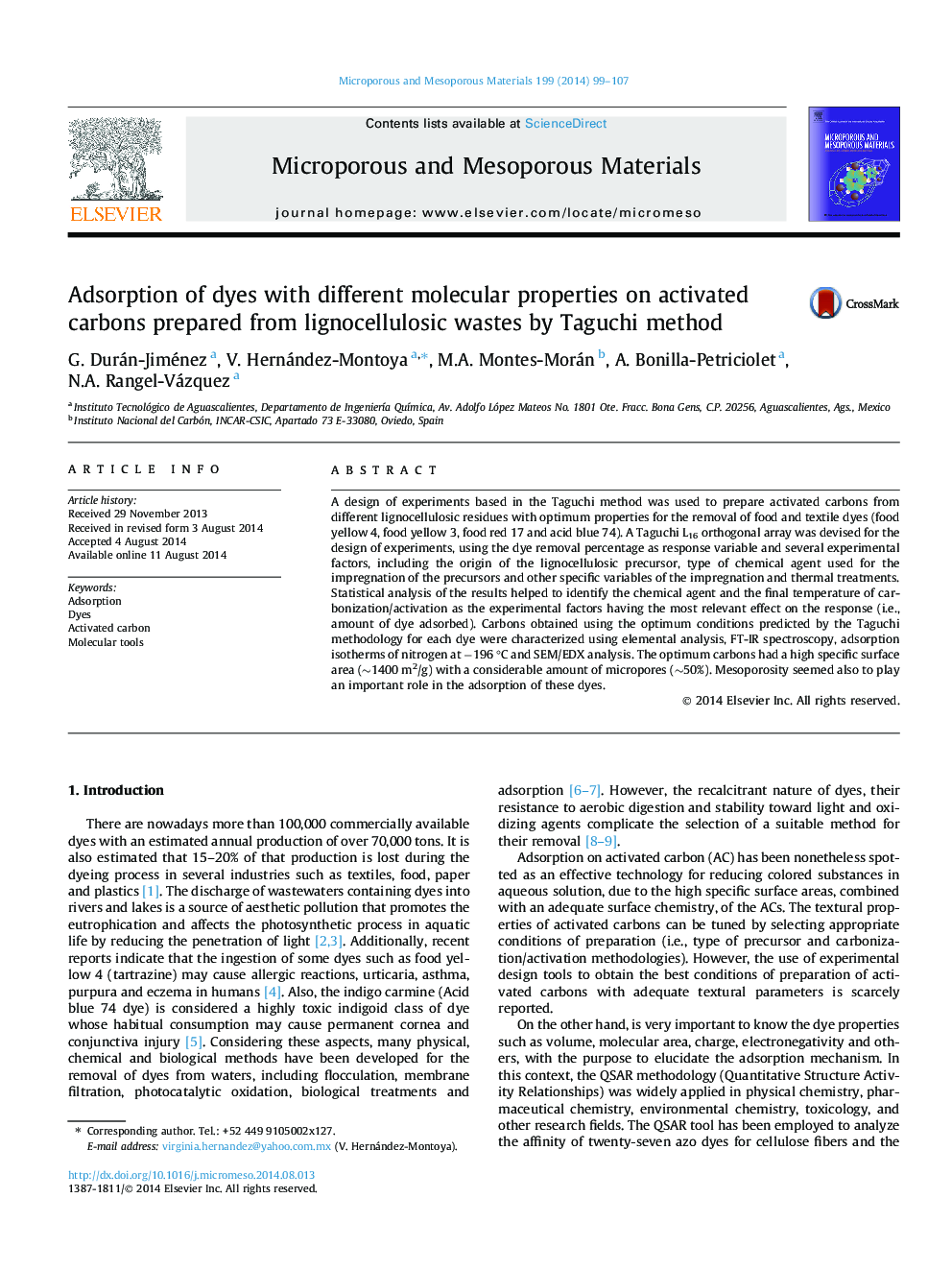| Article ID | Journal | Published Year | Pages | File Type |
|---|---|---|---|---|
| 72977 | Microporous and Mesoporous Materials | 2014 | 9 Pages |
•Activated carbons from different lignocellulosic residues with optimum properties were prepared by Taguchi method.•The optimum carbons had a high specific surface area with a considerable amount of micropores.•The removal of food and textile dyes was studied and the adsorption behavior was interpreted using molecular tools.
A design of experiments based in the Taguchi method was used to prepare activated carbons from different lignocellulosic residues with optimum properties for the removal of food and textile dyes (food yellow 4, food yellow 3, food red 17 and acid blue 74). A Taguchi L16 orthogonal array was devised for the design of experiments, using the dye removal percentage as response variable and several experimental factors, including the origin of the lignocellulosic precursor, type of chemical agent used for the impregnation of the precursors and other specific variables of the impregnation and thermal treatments. Statistical analysis of the results helped to identify the chemical agent and the final temperature of carbonization/activation as the experimental factors having the most relevant effect on the response (i.e., amount of dye adsorbed). Carbons obtained using the optimum conditions predicted by the Taguchi methodology for each dye were characterized using elemental analysis, FT-IR spectroscopy, adsorption isotherms of nitrogen at −196 °C and SEM/EDX analysis. The optimum carbons had a high specific surface area (∼1400 m2/g) with a considerable amount of micropores (∼50%). Mesoporosity seemed also to play an important role in the adsorption of these dyes.
Graphical abstractFigure optionsDownload full-size imageDownload as PowerPoint slide
